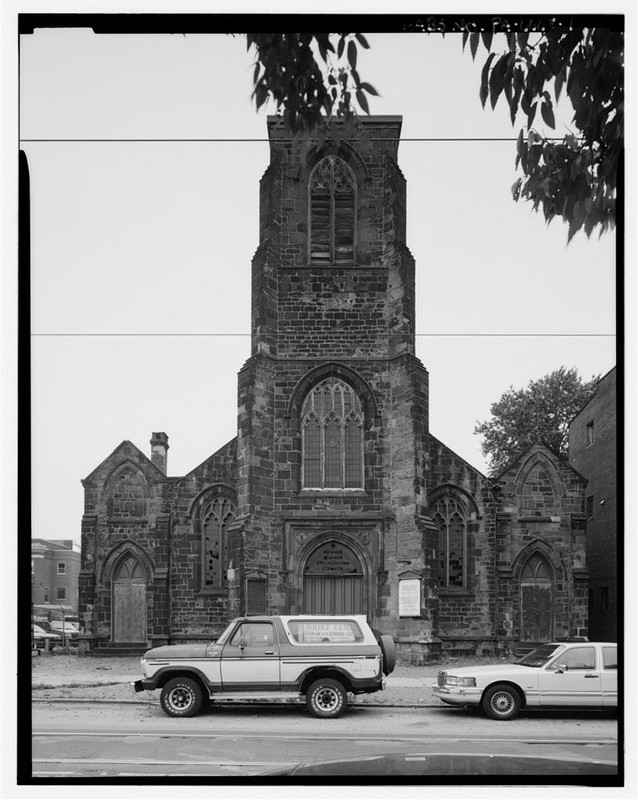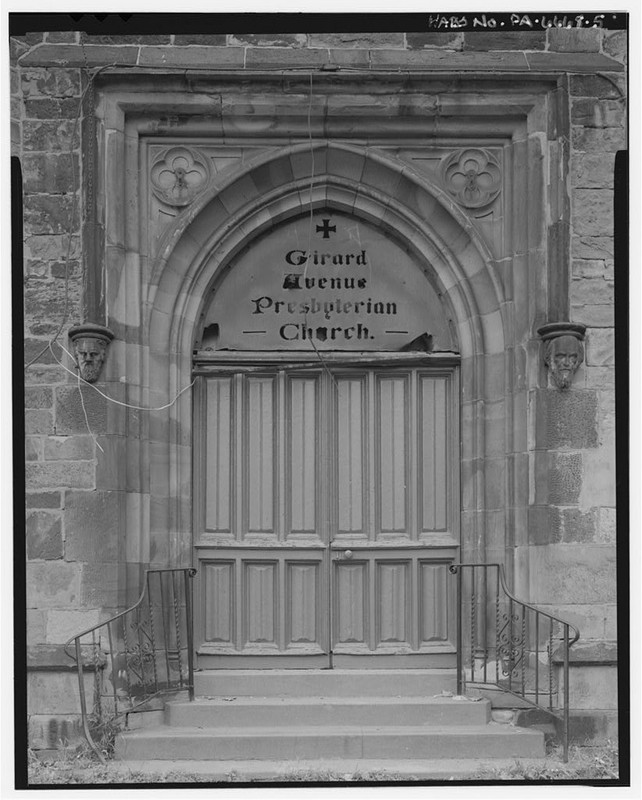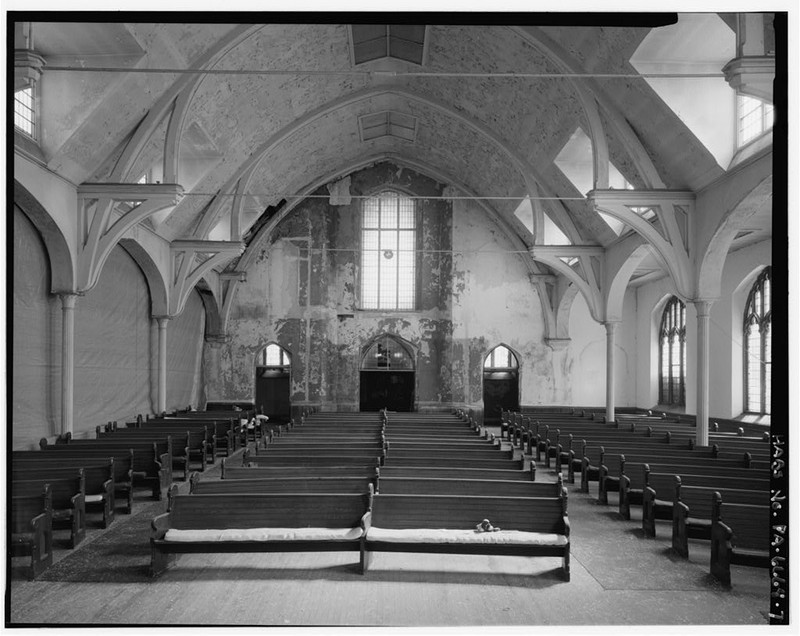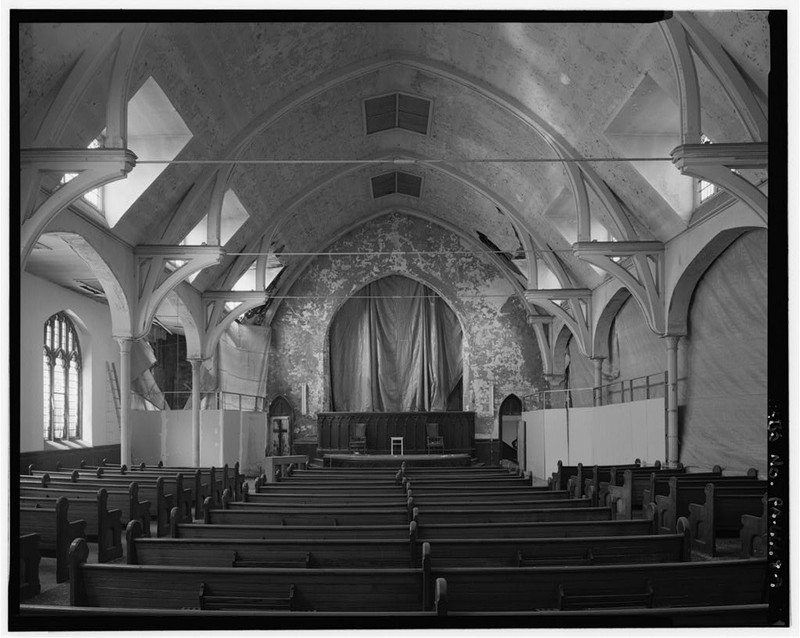Green Hill Presbyterian Church (1848-2009)
Introduction
Text-to-speech Audio
Now an empty lot, the Green Hill Presbyterian Church was a staple of Girard Avenue for over 150 years. Scottish-American architect John Notman (1810-1865) was tasked with building a church for the once-rural Pennsylvania community. It was founded and organized by Reverend Thomas Brainerd as a “New School” revivalist congregation which dissented from the conservative “Old School” Presbyterian Church. Rev. Brainerd was gifted the plot of land, valued at $3000, from philanthropist Charles Macalester while campaigning throughout the community raising funds for a new church. Prior to Green Hill’s construction, Brainerd conducted religious services in peoples’ homes. Built in 1848 and costing $10,000, Green Hill Presbyterian underwent numerous and drastic renovations throughout its history before being torn down in 2009.
Images
“Green Hill Presbyterian Church.” Historic American Buildings Survey.

“Green Hill Presbyterian Church.” Historic American Buildings Survey.

"Green Hill Presbyterian Church.” Historic American Buildings Survey.

"Green Hill Presbyterian Church.” Historic American Buildings Survey.

Backstory and Context
Text-to-speech Audio
Now an empty lot, the Green Hill Presbyterian Church was a staple of Girard Avenue for over 150 years. Scottish-American architect John Notman (1810-1865) was tasked with building a church for the once-rural Pennsylvania community. It was founded and organized by Reverend Thomas Brainerd as a “New School” revivalist congregation that dissented from the conservative “Old School” Presbyterian Church. Rev. Brainerd was gifted the plot of land, valued at $3000, from philanthropist Charles Macalester while campaigning throughout the community to raise funds for a new church. Prior to Green Hill’s construction, Brainerd conducted religious services in peoples’ homes.
The gothic-style church was built in 1848 and cost $10,000. Green Hill Presbyterian also underwent numerous and drastic renovations throughout its history. The community wanted to expand the church, but the property owners, the Trustees of the Green Hill Presbyterian Church (GHPC), were plagued by debt until the 1880s. In 1890 the board hired architect A.J. Drinkhouse and paid him $7500 to renovate and redesign the building. Bathrooms were installed in the early 20th century, electricity was introduced in the 1910s, and the steeple was removed in 1947 after falling into disrepair. After over a century serving different Presbyterian congregations, the building was bought by Christ Temple Baptist Church in 1975. Eventually, deterioration issues led the congregation to cease using the the sanctuary in 1997, moving their services to an auxiliary building. Due to a decrease in church membership and expensive repair costs, Christ Temple Baptist Church sold the property in 2004 and the church was later demolished in 2009.
Cite This Entry
Mikaela Comas on behalf of Girard College and Katherine Haas. "Green Hill Presbyterian Church (1848-2009)." Clio: Your Guide to History. December 23, 2022. Accessed March 29, 2025. https://theclio.com/entry/159233
Sources
“Green Hill Church.” Philadelphia Architects and Buildings (2022) https://www.philadelphiabuildings.org/pab/app/pj_display.cfm/460264
“Green Hill Presbyterian Church.” Library of Congress (2022) https://www.loc.gov/item/pa3861/
Jacob, James. et al. “Historic American Building Survey: Green Hill Presbyterian Church.” U.S. National Park Service. (2000)
White, WM., and William Scott. 1895. The Presbyterian Church in Philadelphia: A Camera and Pen Sketch of Each Presbyterian Church and Institution in the City. Allen, Lane & Scott Publisher.
Library of Congress (2022) https://www.loc.gov/item/pa3861/
Library of Congress (2022) https://www.loc.gov/item/pa3861/
Library of Congress (2022) https://www.loc.gov/item/pa3861/
Library of Congress (2022) https://www.loc.gov/item/pa3861/

